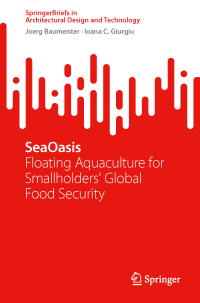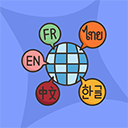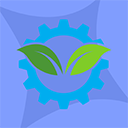Text
SeaOasis: floating aquaculture for smallholders' global food security
After thousands of years of evolution, humankind has achieved a stage of civilization where many people take it for granted to enjoy strawberries in the wintertime, drink water from the other side of the globe, and fly around the world (if effective vaccinations against threatening viruses are available).
Unfortunately, this quality of life is often achieved at the expense of others suffering from starvation, water shortage, or environmental pollution. This fatal unbalance will likely increase due to a constantly growing population.
The problem of ensuring food security and production at sufficient levels to support future populations is among the key challenges for the 2050 horizon. Considering the combined effects of population growth, soil degradation due to climate change as well as limited available agricultural land, sustainable, and holistic approaches and design solutions must be explored.
The SeaOasis is an experimental design response aimed at tackling the challenge of increasing food security through sustainable design. Problems and opportunities relating to current food supply were analyzed to formulate a specific design brief.
The brief aimed to identify key research directions that could support the improvement and sustainable future growth of current food systems through targeted design interventions and innovation.
The basic hypotheses of utilizing water surfaces to expand agricultural land, tailoring design solutions to smallhold farming and hybridizing traditional and industrial sustainable farming technologies derived from the brief were further applied to develop a practical design for a novel aqua-farming system: SeaOasis.
Appraised in terms of potential implementation locations and scale as well as economic feasibility, the SeaOasis provides a potent example for an economically viable, scalable modular solution, with potential applications in a variety of locations across the globe.
Ketersediaan
Informasi Detail
- Judul Seri
-
-
- No. Panggil
-
639.31 JOE s
- Penerbit
- Singapore : Springer Nature Singapore., 2022
- Deskripsi Fisik
-
-
- Bahasa
-
English
- ISBN/ISSN
-
9789511913730
- Klasifikasi
-
639.31
- Tipe Isi
-
-
- Tipe Media
-
-
- Tipe Pembawa
-
-
- Edisi
-
Ed. 1
- Subjek
- Info Detail Spesifik
-
-
- Pernyataan Tanggungjawab
-
Joerg Baumeister
Versi lain/terkait
Tidak tersedia versi lain
Lampiran Berkas
Komentar
Anda harus masuk sebelum memberikan komentar

 Karya Umum
Karya Umum  Filsafat
Filsafat  Agama
Agama  Ilmu-ilmu Sosial
Ilmu-ilmu Sosial  Bahasa
Bahasa  Ilmu-ilmu Murni
Ilmu-ilmu Murni  Ilmu-ilmu Terapan
Ilmu-ilmu Terapan  Kesenian, Hiburan, dan Olahraga
Kesenian, Hiburan, dan Olahraga  Kesusastraan
Kesusastraan  Geografi dan Sejarah
Geografi dan Sejarah